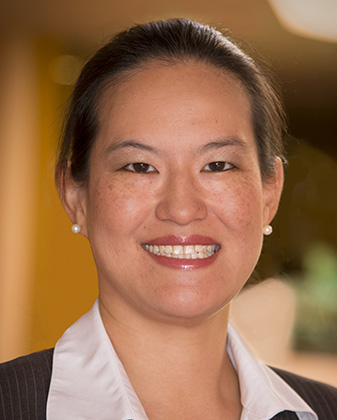In the News
News
Aug 03, 2017
President's Message
Constructive Exclusion From the Profession: How Far Have We Really Come Since Hong Yen Chang?
Aug 03, 2017
By Dorothy Chou Proudfoot

Recently, Yale Law School and the National Asian Pacific American Bar Association jointly published a study, "A Portrait of Asian Americans in the Law.” Four Yale Law graduates and California Supreme Court Associate Justice Goodwin Liu conducted a two-year study that tracked the rise of Asian Americans in the law over the last three decades and some of its findings caused me to think about my own place in the law. Without going too deeply into the study's subjective factors of job satisfaction and perceived barriers to advancement (including, shockingly, overt racial and gender discrimination), the statistics are thought-provoking.
During the period of time roughly paralleling my own legal career, the number of Asian American attorneys in the US has doubled. The enrollment of Asian Americans in law school outpaced that of other ethnic minority groups, but since its peak in 2009, has drastically dropped, much faster than all other groups, for no readily-apparent reason. Currently, the percentage of Asian American attorneys is representative of the overall population in the nation, but Asian Americans are still significantly underrepresented in leadership roles in academia, private practice, and the public sector.
This trend of disproportionality starts in law school: though Asian American students made up over 10% of the top tier law schools, they only obtained 6.5% of the federal clerkships, and 4.6% of the state clerkships. A surprising/not surprising finding was that in the top tier schools, 58.2% of all the students were white, but they obtained over 82% of all federal clerkships and over 80% of all state clerkships. Perhaps consistent with those clerkship numbers, only 4.5% of law professors were Asian American, with only 3 of 202 deans and 18 of 709 associate or vice deans.
The law firm data were consistent with my anecdotal recollection of the big firm world: Asian Americans have been the largest minority group in major law firms for 20 years, but have the highest attrition rates, a 68% decline from 2 to 12 years of experience. Compared to other groups, they were the most underrepresented at the management level (on executive and review committees).
The picture was also dismal in the public sector. Within California, while the percentage of line prosecutors who were Asian American (12.6%) approached the overall makeup of the state's population (14.7%), the percentage for supervisory positions fell to 9% and at the top, there was only one Asian American elected District Attorney. In the entire nation, only 4 of the 2437 elected prosecutors and 3 of the 94 United States Attorneys (Hawaii, Guam, and the Southern District of New York) were Asian American. Public defender numbers were not even available. As for the judiciary, only 3.4% of federal judges nationwide were Asian American, compared to 14.2% African American and 10.6% Hispanic. Only 2% of state court judges were Asian American.
In focusing on the statistics, I do not mean to encourage a quota-like approach to the challenge of guiding the legal profession to be more representative of the general populace. Statistical reporting is a helpful shorthand mechanism to get the conversation going and tells us where we are now. Of course there are those who do not believe diversity and inclusion matter—they see it as a distraction, or more insidiously, a “lowering of standards.” We know that confirmation bias inhibits people from modifying their beliefs, even in the face of contrary evidence, but the difficulty of change should not inhibit us from working for it.
There is insufficient space in this President's Message to do this discussion justice but I hope that readers of the study will allow themselves to ponder whether societal biases account for the reported results, and determine what we, as lawyers, can and should do about it.
Dorothy Chou Proudfoot is a Deputy District Attorney at the Marin County District Attorney’s Office, and President of the Marin County Bar Association. She earned her B.A. and J.D. from UC Berkeley.












